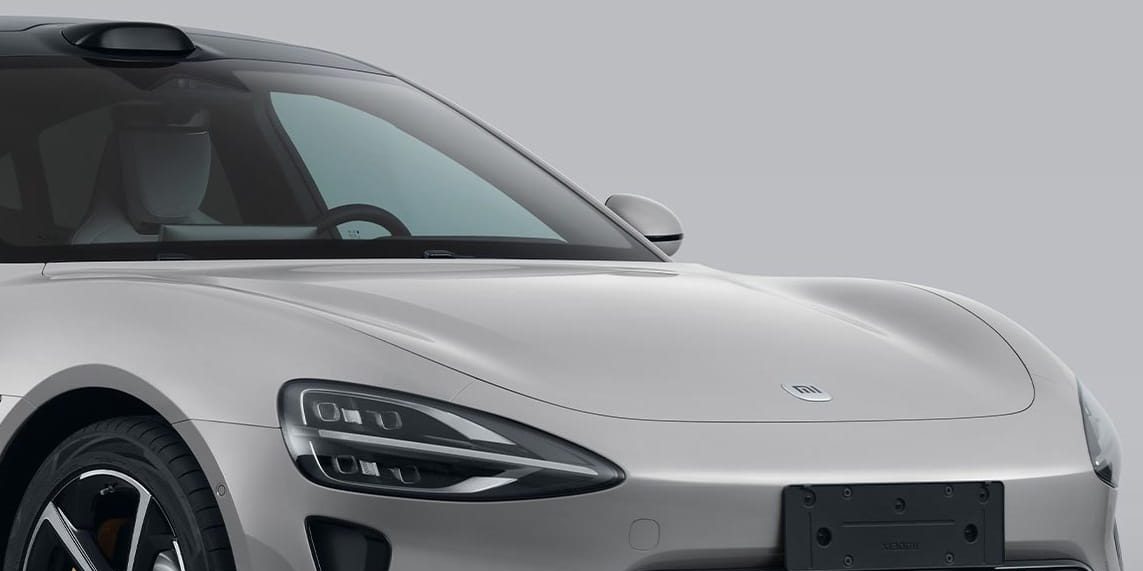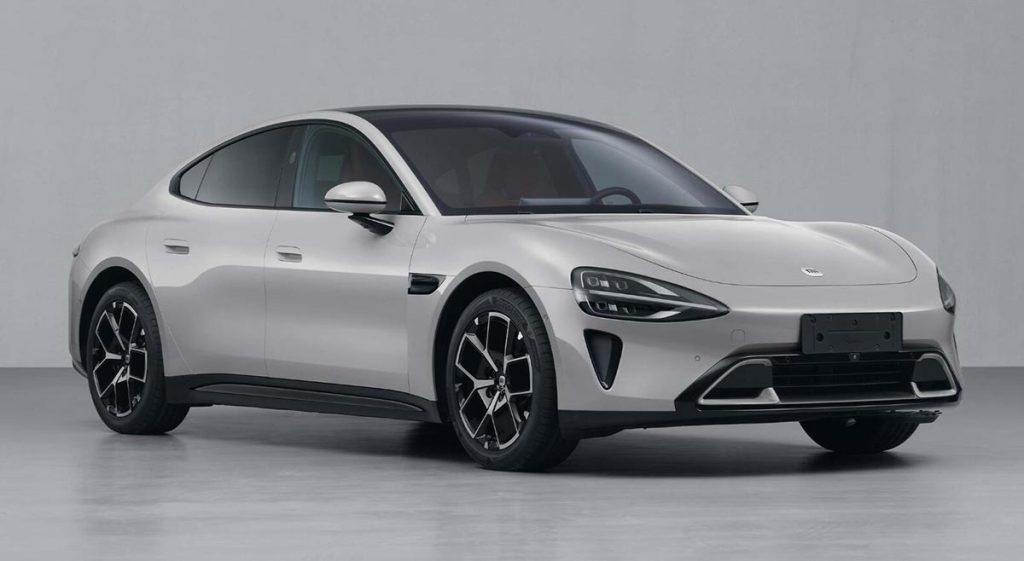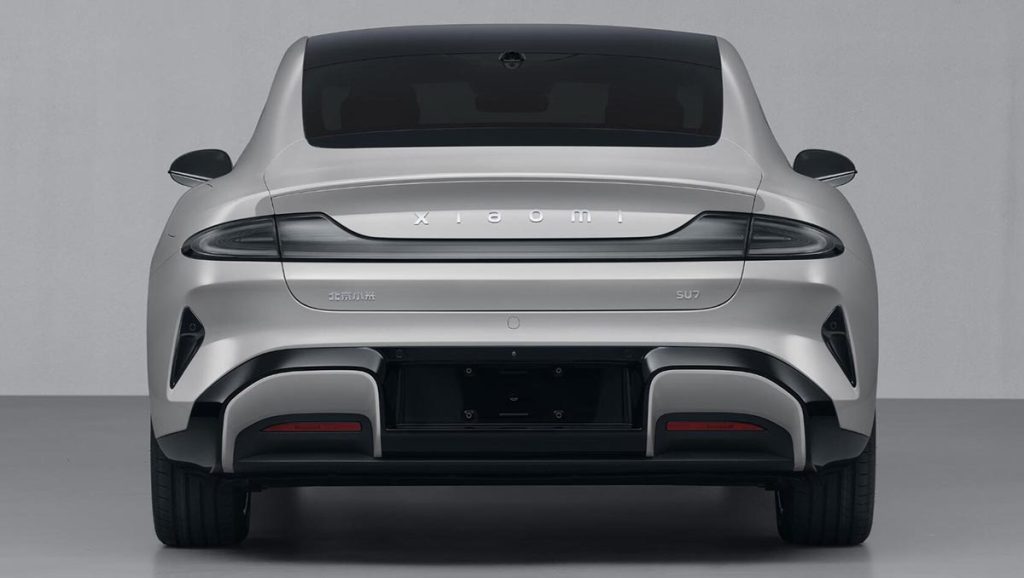These are the first pictures of Xiaomi’s 650+ hp EV, the SU7


The first images of Xiaomi’s SU7 EV have been published by a Chinese government regulatory agency, showing off the car in advance of its official public debut. Alongside the images, various specifications in the regulatory filings are being reported, such as the car’s size, weight, power output, manufacturer, and available models at launch.

According to the filing (via CarNewsChina), Xiaomi will not actually be building the car — Beijing Automotive Industry Holding Co. (BAIC) will. BAIC is a government-owned Chinese car manufacturer and will be producing the SU7 on contract. This was previously rumored over a year ago, and today’s news confirms it.
Beyond that, we’re getting a sense of where the SU7 will be positioned in the vehicle landscape. With a 118″ wheelbase and fastback roofline (though a faux-hatch trunk), the SU7 seems closest to the Tesla Model S’s packaging, albeit with a slightly longer wheelbase than that car. That’s not very surprising given the extreme popularity of long-wheelbase versions of mid-size luxury sedans in China, the market this car is undoubtedly seeking to court. On overall length, the SU7 is actually just shy of a Model S (a difference of less than 30mm), so the two seem like prime points of comparison.

While we have power specifications and curb weights, range and battery capacity weren’t included in the filings. The single-motor RWD variant of the SU7 will produce around 295 hp and weigh around 4,365 lbs. The premium AWD dual-motor version makes 663 hp and weighs a substantially heftier 4,861 lbs (presumably owing not just to the extra motor but to a larger battery). We do know battery chemistries between the two models are different, with the cheaper car getting a lithium iron phosphate (LFP) pack and the premium trim using nickel manganese cobalt (NMC). Previous leaks indicated an 800-Volt architecture and 100kWh battery, the latter likely referring to the higher-end model.
Based on images from the regulatory filing, we can also see that some trims of the SU7 will feature a rather bulbous lidar array on the roof of the car, presumably to provide driver assistance and autonomy features — though it’s not clear what level of autonomy the SU7 will actually be capable of. The specific trims available at launch are the SU7, SU7 Pro, and SU7 Max, which do make this car sound more like a smartphone than a luxury sedan. There will also apparently be a Founders Edition subvariant (badging is visible on the photos), because of course there will.
Given Xiaomi is a Chinese brand with an ecosystem of products and services largely marketed to Chinese customers, it’s unclear if the company has any plans to sell the SU7 outside its home country. With state-owned BAIC doing Xiaomi’s manufacturing, that does lend credibility to the car launching sooner rather than later, and Xiaomi allegedly wants the car to be available starting in early 2024, with manufacturing beginning before the end of 2023.
City Dwellers’s take
Hodge-podge of styling elements aside (I see Tesla Model 3, Hyundai Sonata, and Kia Stinger on this car, for a start), the Xiaomi SU7 definitely seems set to raise eyebrows with its available high-output model, lidar-assisted autonomy features, and Xiaomi-developed in-car software. Of course, two big details are omitted in today’s not-leak: Range and pricing.
I’ll personally be curious to see what level of improved integration Xiaomi will be able to provide owners of its smartphones with this car, though I suspect many of those things will only ever be relevant to China-market customers. While Xiaomi does sell phones in a long list of countries around the world, its larger “Mi ecosystem” of products and services is mostly a China play. And with BAIC building the car, it’s unclear just how much of this car will be Xiaomi versus BAIC. Xiaomi has a long history of slapping its name on products the company doesn’t meaningfully contribute to from an engineering and development standpoint. (That’s basically what the “Mi ecosystem” is — white-label branding.)
Given Xiaomi has essentially zero brand recognition in the United States, it seems exceptionally unlikely this car will ever come to the US market. The company has much more popularity in Southeast and Central Asia, but these aren’t regions where luxury EVs are particularly relevant to most consumers. Perhaps its best hope outside Asia, then, is Europe, where Xiaomi is surprisingly dominant in certain countries (e.g., Spain, Denmark, Greece, Belgium). The problem is that dominance leans heavily toward the value segment of the market — not exactly the kind of people who are buying a big, expensive EV. Xiaomi’s brand is built on delivering high value relative to product capability, and that’s far easier to do in the heavily commoditized, high-turnover world of smartphones. There’s only so much you can do to make a full-size EV cost-accessible, and I sincerely doubt Xiaomi and BAIC will be able to wave a magic wand to deliver world-beating pricing (at least outside China).
Perhaps the largest impact a car like the SU7 will have on the broader market is in driving the discussion of technology companies building their own vehicles. Apple has long flirted with the idea of its own car, and with global smartphone growth plateauing, consumer tech brands will likely be eyeing the success of Xiaomi’s outsourced manufacturing arrangement with great interest.
FTC: We use income earning auto affiliate links. More.
